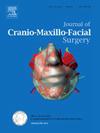不同矢状和垂直骨骼模式下下颌亚单位的三维形态计量学分析。
IF 2.1
2区 医学
Q2 DENTISTRY, ORAL SURGERY & MEDICINE
引用次数: 0
摘要
随着三维(3D)放射成像在正畸实践中的应用,以前在二维(2D)图像上无法检测到的颌骨形态学特征现在有机会更彻底地了解。本研究旨在三维评估不同骨矢状和垂直模式的下颌骨功能骨亚基。共有281名中国成年患者被回顾性纳入研究。利用锥形束计算机断层扫描(CBCT)的三维重建图像,评估和比较了不同矢状和垂直骨骼分类的下颌功能骨骼亚基。在两性中,除了联合单位外,几乎所有下颌亚单位长度在所有矢状面和垂直面形态上都表现出显著差异。第三类骨骼的髁突和身体单位的长度明显更长,而第二类骨骼的身体单位长度则更短。有趣的是,与其他两个矢状面组相比,I类骨骼的髁-冠状角明显更大。与其他两个垂直组相比,超发散型表现为髁突、冠突和角单位的长度明显较短,髁-冠突、髁-角和髁-下神经角明显较大。这些发现表明雄性和雌性之间没有性别二态性。骨骼II类的下颌骨发育不全主要归因于身体单位发育不全,而骨骼III类的下颌骨增生是由于所有主要亚单位的过度生长。高度分化的面部特征是分支亚单位发育不全,而体单位发育不全。本文章由计算机程序翻译,如有差异,请以英文原文为准。
Three-dimensional morphometric analysis of mandibular subunits in different sagittal and vertical skeletal patterns
With the application of three-dimensional (3D) radiographic imaging in orthodontic practice, jawbone morphology features that were previously undetectable on two-dimensional (2D) images now have the opportunity to be more thoroughly understood. This study aimed to three-dimensionally assess the mandibular functional skeletal subunits in different skeletal sagittal and vertical patterns.
A total of 281 Chinese adult patients were retrospectively enrolled. Using the 3D reconstructed images from the cone-beam computed tomography (CBCT) scans, the mandibular functional skeletal subunits were evaluated and compared in different sagittal and vertical skeletal classes.
In both genders, almost all mandibular subunit lengths, except for the symphysis unit, showed significant differences across all the sagittal and vertical facial patterns. Skeletal Class III exhibited a significantly longer length of the condyle and body unit, whereas skeletal Class II had only a shorter body unit length. Interestingly, the condylo-coronoid angle was significantly larger in skeletal Class I compared to the other two sagittal groups. The hyperdivergent pattern demonstrated a significantly shorter length of the condyle, coronoid, and angle unit, as well as significantly larger condylo-coronoid, condylo-gonial, and condylo-inferior nerve angles, compared to the other two vertical groups. These findings showed no sexual dimorphism between males and females.
Mandibular hypoplasia in skeletal Class II is primarily attributed to the underdevelopment of the body unit, whereas mandibular hyperplasia in skeletal Class III is due to the overgrowth of all the major subunits. A hyperdivergent facial pattern is characterized by underdevelopment of the ramus subunits but not the body unit.
求助全文
通过发布文献求助,成功后即可免费获取论文全文。
去求助
来源期刊
CiteScore
5.20
自引率
22.60%
发文量
117
审稿时长
70 days
期刊介绍:
The Journal of Cranio-Maxillofacial Surgery publishes articles covering all aspects of surgery of the head, face and jaw. Specific topics covered recently have included:
• Distraction osteogenesis
• Synthetic bone substitutes
• Fibroblast growth factors
• Fetal wound healing
• Skull base surgery
• Computer-assisted surgery
• Vascularized bone grafts

 求助内容:
求助内容: 应助结果提醒方式:
应助结果提醒方式:


